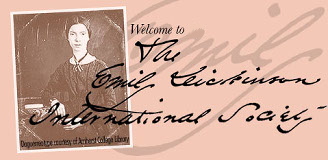
You are hereManheim, Dan: "Emily Dickinson’s Republic of Suffering"
Submitted by dmanheim on July 19, 2013 - 10:07am
Emily Dickinson’s Republic of SufferingDan Manheim, Centre College A number of the poems Emily Dickinson composed in the aftermath of the Civil War, appearing principally in the manuscripts of 1865 and 1871, but continuing periodically even into the 1880s, document her effort to find a way in which private expressions of sorrow could participate in public projects of reconciliation. Like Walt Whitman, who more famously took on the role of the nation’s “wound-dresser,” determined to confront the “bloody stump” that the nation had “not yet look’d on,” Dickinson sought in her post-war poetry to address loss and pain and to devise a means by which expansive social connections could be fostered in the wake of political disaster. Her post-war poems show her engaging the questions of how to reconcile a divided nation; how to accept loss; how to sympathize with those who have suffered; and how to make suffering meaningful in a world from which divine authority has become remote. Long characterizing herself as a kind of “Queen of Calvary,” Dickinson discovered, in the spectacle of suffering writ large, a new vision of what she was for, a new direction for her poetic power, and a new way of seeing her own distinctive, unitary sensibility as a contributory element in a wider democratic union.
|